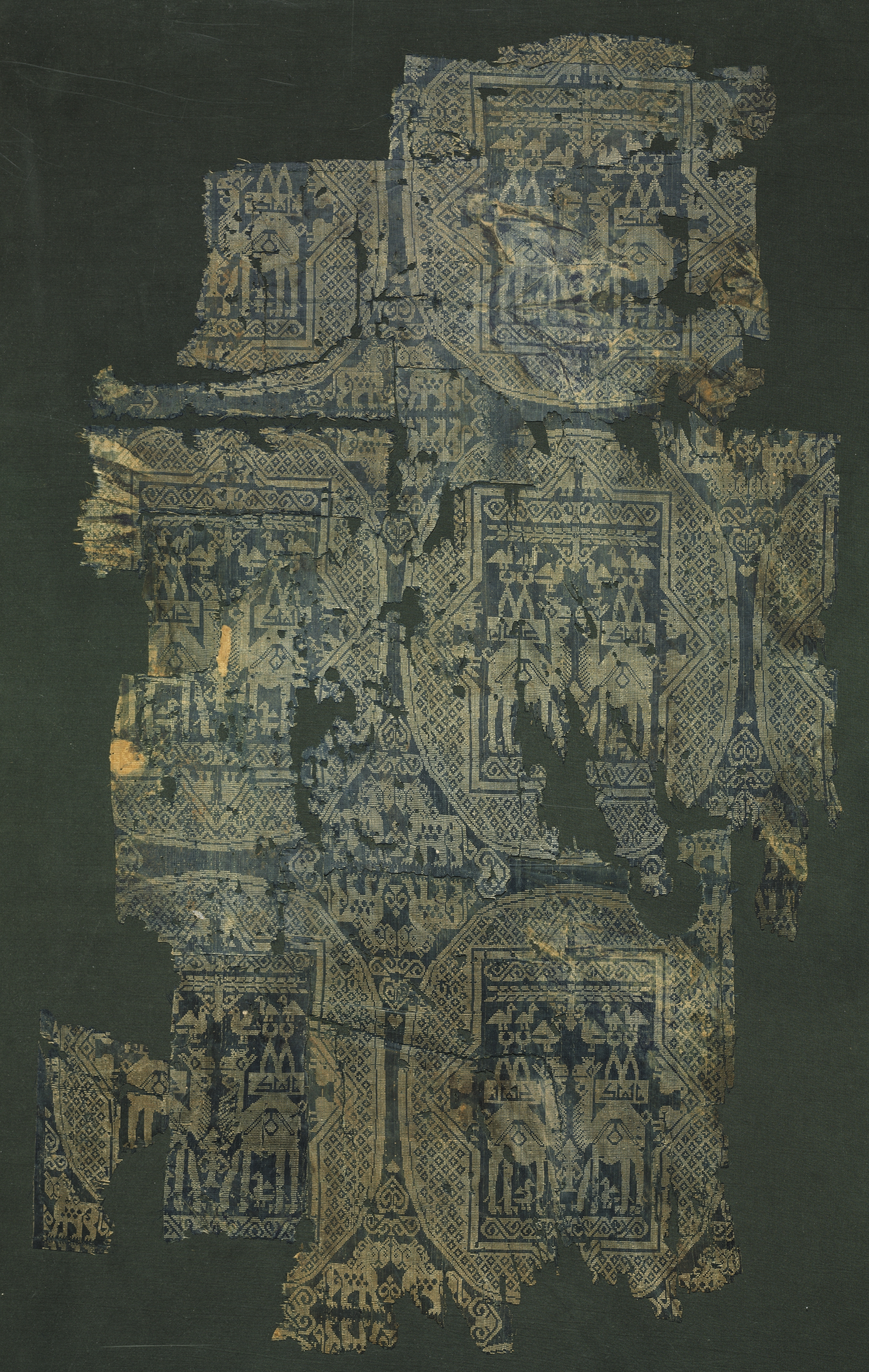The Cleveland Museum of Art
Collection Online as of April 25, 2024

Roundels with camels bearing howdahs
900s–1000s
Overall: 78.8 x 48.6 cm (31 x 19 1/8 in.)
Location: not on view
Description
This unusually large fragment is part of a rare group of silks characterized by an unusal weave structure. The group is most important, however, because the Kufic inscriptions (here "mulk," or "Dominion," an abbreviation of "al-mulk lillah," meaning "Dominion belongs to God") demonstrates their Islamic origin. The Byzantine motifs found in some of them (for example, a second fragment in the museum collection), however, lead scholars to believe they may have been woven in Antioch, the scene of much fighting between Muslims and the Crusaders. These fragments become, therefore, fascinating evidence of two traditions occurring in one area.- Mrs. Paul [Marguerite] Mallon [d. 1977], Paris, France?–1986(Goumaronart, Inc. sold to the Cleveland Museum of Art).1986–The Cleveland Museum of Art, Cleveland, OH
- Turner, Evan H. “The Year in Review for 1986.” The Bulletin of the Cleveland Museum of Art 74, no. 2 (1987): 38–79. Mentioned: p. 74, no. 197 www.jstor.orgWilckens, Leonie von. Die textilen Künste: von der Spätantike bis um 1500. München: C.H. Beck, 1991. no. 62, p. 64Mackie, Louise W. Symbols of Power: Luxury Textiles from Islamic Lands, 7th-21st Century. Cleveland, OH; New Haven, CT: The Cleveland Museum of Art; Yale University Press, 2015. Reproduced: p. 137, fig. 4.5; Mentioned: p. 136
- Textiles from Egypt, Syria and Spain: 7th through 15th centuries. The Cleveland Museum of Art, Cleveland, OH (organizer) (November 26-June 6, 1991).Year in Review for 1986. The Cleveland Museum of Art, Cleveland, OH (organizer) (February 4-March 15, 1987).
- {{cite web|title=Roundels with camels bearing howdahs|url=false|author=|year=900s–1000s|access-date=25 April 2024|publisher=Cleveland Museum of Art}}
Source URL:
https://www.clevelandart.org/art/1986.90